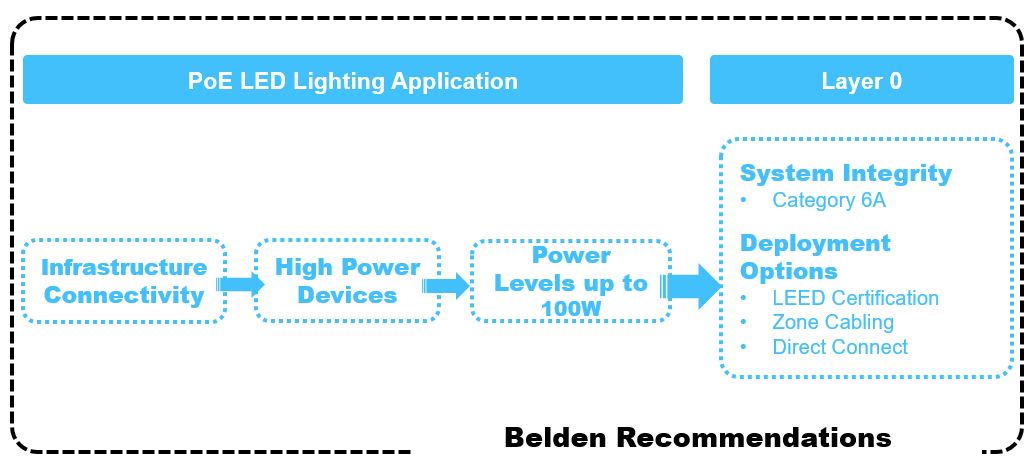PoE LED Lighting: A Human-Centric Approach to Lighting
Power over Ethernet (PoE) makes it easier and more cost efficient to power all the "things" that make up Internet of Things and smart buildings. Why? Because with PoE, powering these devices doesn't require a power and a data connection. Through a single category cable, both power and data can be delivered to a device.
Before PoE, these systems may have been able to come together over one IP network for improved control and monitoring, but they still required separate data and electrical connections, as well as proximity to electrical outlets.
Over the past few years, PoE power levels have been increasing—starting at 15W and growing to 30W and 60W. Today, it’s possible to deliver 100W of power plus data over a single cable. PoE standards are also changing to support higher power levels. IEEE 802.3bt (currently under development), calls for 4-pair power delivery to improve efficiency and support complex devices. It also calls for two power variants—Type 3 (60W) and Type 4 (100W).
These higher wattages allow devices such as point-of-sale registers, digital signage displays and PTZ surveillance cameras to take advantage of PoE. LED lighting systems can also now connect to the network via a PoE cable.
Connecting LED lighting systems to the network via PoE offers many benefits. Each fixture can utilize a standard RJ45 connector and have its own IP address for individual monitoring and control. Through integrated sensors, LED fixtures transform into smart lighting systems designed to collect data on occupancy, temperature, daylight, etc. and make changes in lighting levels accordingly.
Who Benefits from PoE LED Lighting?
Although any facility can be a candidate for PoE LED lighting, healthcare facilities are noticing major improvements due to the impact it has on staff productivity and patient care and recovery.
PoE LED lighting offers a human-centric approach to lighting, recognizing that lighting can positively or negatively impact people. Lighting conditions can either disrupt or sync our circadian rhythms, which are physical, mental and behavioral changes that follow a 24-hour cycle. A human-centric approach to lighting means that it can be controlled to enhance performance, productivity and well-being.
In healthcare facilities, for example, fluorescent fixtures can be replaced with PoE LED fixtures that can be dimmed, color tuned and set to specific schedules. This not only improves sleep patterns for patients, decreases falls and reduces disruptive behavior (such as agitation or anger), but also lowers energy costs.

Installation and Deployment Challenges
There are certain challenges to keep in mind when deploying PoE LED lighting. For example, selecting the right option to power your LED lighting through the Ethernet network-either through centralized PoE, distributed/in-ceiling switches or a gateway-is crucial to ensure the system functions as expected and offers all promised benefits. (To see which option is best for your situation, read our blog on the topic.)
It's also important to note that connections once being made within the office space are now being made within a plenum space, which has different requirements. As a result, cables and connectivity used in these environments must be rated for use in a plenum space.
Ready to Learn More About PoE LED Lighting?
Want to learn more about PoE LED lighting in healthcare facilities and the infrastructure required to support it? Register to review our on-demand webinar, where you’ll learn how PoE LED lighting is creating new paths to improved lighting control, energy efficiency and patient care outcomes.
This webinar covers the benefits of PoE LED lighting, how it differs from other lighting options, building standards that support it and various cabling-infrastructure considerations to effectively deploy PoE LED lighting in a healthcare environment.
Before you decide whether PoE LED lighting is right for you, it’s important to understand what your current infrastructure can support—and what changes may be needed for successful deployment. Belden can help you determine how to cost effectively take advantage of PoE LED lighting and make sure that your enterprise network is set up to support it for the long term. Learn more here.
